Cheese, for many Brits, is often synonymous with cheddar. But for centuries, the country’s staple cheese was mild, crumbly and named after a British county. At the turn of the 20th century, almost all of Cheshire’s farms produced Cheshire cheese. Now, there’s just one.
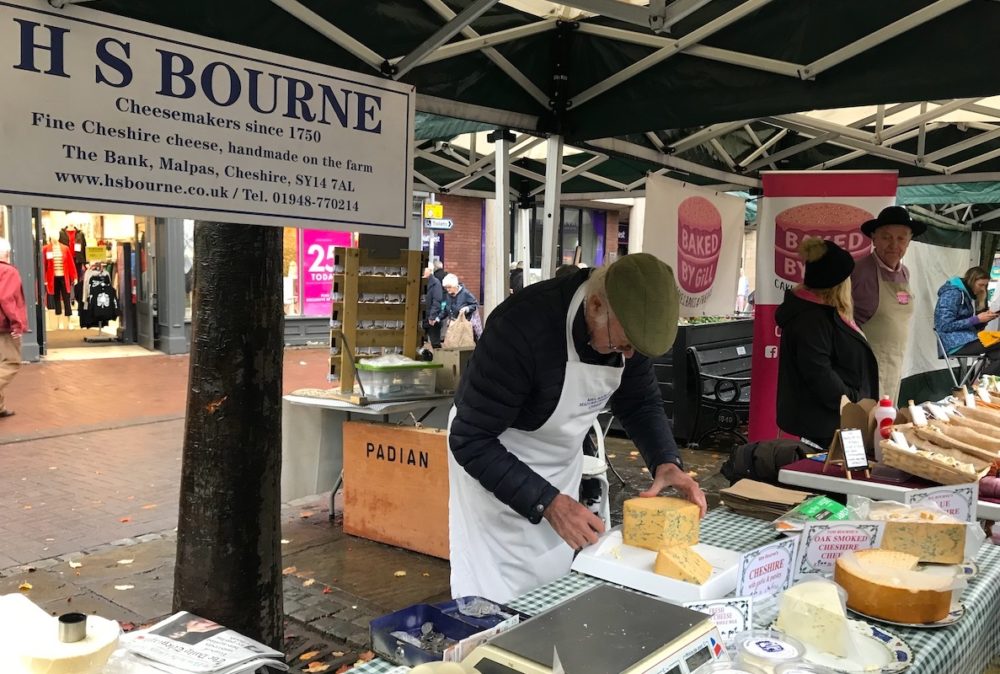
John Bourne serves a long line of customers (Photo: Allie D’Almo)
It’s early on a drizzly Saturday morning in Nantwich Town Square, but a steady stream of customers is already threading by one stall. Behind the counter, 80-year-old John Bourne diligently weighs and wraps hulking wedges of Cheshire cheese sliced from 2kg cylindrical truckles.
Of the half a dozen Cheshire cheeses on offer, only one has the milky white colour and consistency you might usually associate with Cheshire cheese. Instead, there are straw-coloured cheeses dyed with annatto, oak smoked varieties and a rare blue Cheshire, veined like a stilton but richer and more crumbly.
John Bourne’s family has been making traditional Cheshire cheese since 1750. Back then – and for centuries afterwards – this cheese was made at hundreds of individual dairies across Cheshire. Today, Bourne’s is the last remaining Cheshire cheesemaker in Cheshire and the cheese here is as traditional as it gets.
“The industry has shrunk. The environment has changed. The cows are different. But the methodology hasn’t changed. If my father reappeared today, he could walk into the cheese dairy and make our Cheshire cheese,” says John.
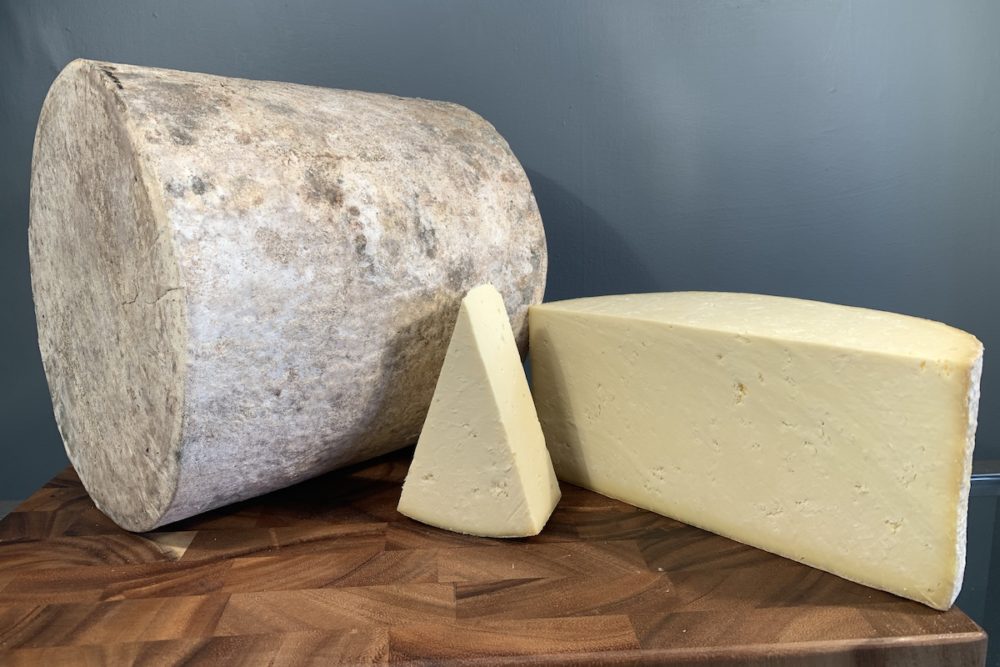
A selection of Bourne’s Cheshire Cheeses (Photo: The Cheese Shop Nantwich)
The farm is located just outside the medieval market town of Malpas, a 25-minute drive from Nantwich along twisting country lanes through the Cheshire Plain. “Everything happens here,” says John, “from the milking to the cutting and turning.”
Made with both morning and evening milk from the farm’s herd of Friesian cows, these recipes are based on the cheeses eaten in the area hundreds of years ago. Each cheese is wrapped in cloth, or in some cases wax, to prevent moisture loss, and left to mature for three to six months to keep it crumbly and true to its traditional taste.
A cheesy reputation
John’s son Hugo, who grew up making cheese, is determined to restore the reputation of farmhouse Cheshire cheese, which is a world away from industrially-produced Cheshire. “People turn their noses up at Cheshire cheese. They’re used to the stuff you get at the supermarket, which is a bit bland,” he says. “But we’re trying to put Cheshire cheese back on the map.”
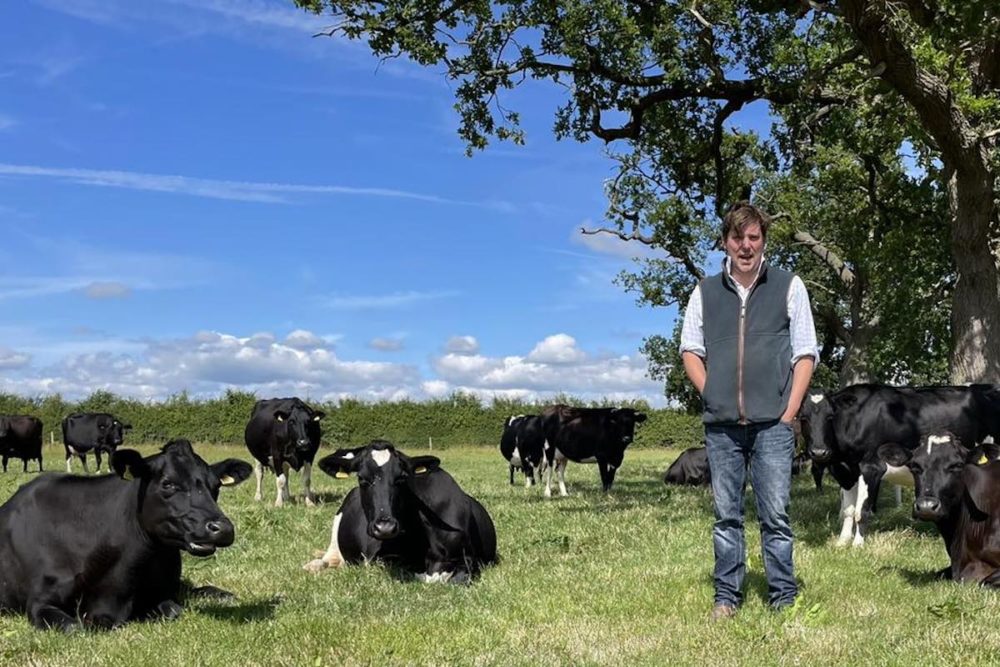
Hugo at The Bank farm in Malpas, where all the Cheshire cheese is made (Photo: Bourne’s Cheshire Cheeses)
While it might be difficult to imagine – particularly when confronted with a pallid, plastic-looking variety we’re all more familiar with – Cheshire cheese once took centre stage on Britain’s territorial cheese map. In fact, it’s Britain’s oldest recorded cheese.
Nick Birchall, a local affineur who runs The Cheese Shop Nantwich, explains that the county’s unique terrain had a lot to do with Cheshire’s rise to Britain’s cheese of choice. “Cheese has been made in Nantwich since the Roman times because Cheshire grows one thing very well: grass. And our grass is particularly good because beneath it is salt. That salt comes up through the grass, which gives the cheese its tang. So, we have good grass, cows and milk. And excellent cheese. We are the original cheesemakers,” he says.
Old Cheshire
In 1580, Queen Elizabeth’s privy reportedly “dined on a number of excellent Cheshire cheeses.” By 1610, William Camden, author of Britannia, surmised that: “Cheshire cheese is more agreeable and better relished than those of other parts of the kingdom.”
But until the early 17th century, Cheshire cheese was relatively unknown outside of the region. That all changed in October 1650, when the first cargo ship departed from Chester laden with 20 tonnes of Cheshire cheese bound for London’s docks. Until then, the capital had acquired most of its cheese and butter from Suffolk, which Londoners described as “hard as the devil”.
This new coastal route substantially reduced the cost of transporting the cheeses, which previously needed to be loaded onto horses and carts. It boosted local economies like that of Nantwich too.
According to the port books of Chester, 364 tonnes of Cheshire cheese were shipped to London in 1664. By the 1670s, this had risen to one thousand tonnes and by the 1680s this number had doubled again. East Anglian cheeses were out and Cheshire cheese was in.
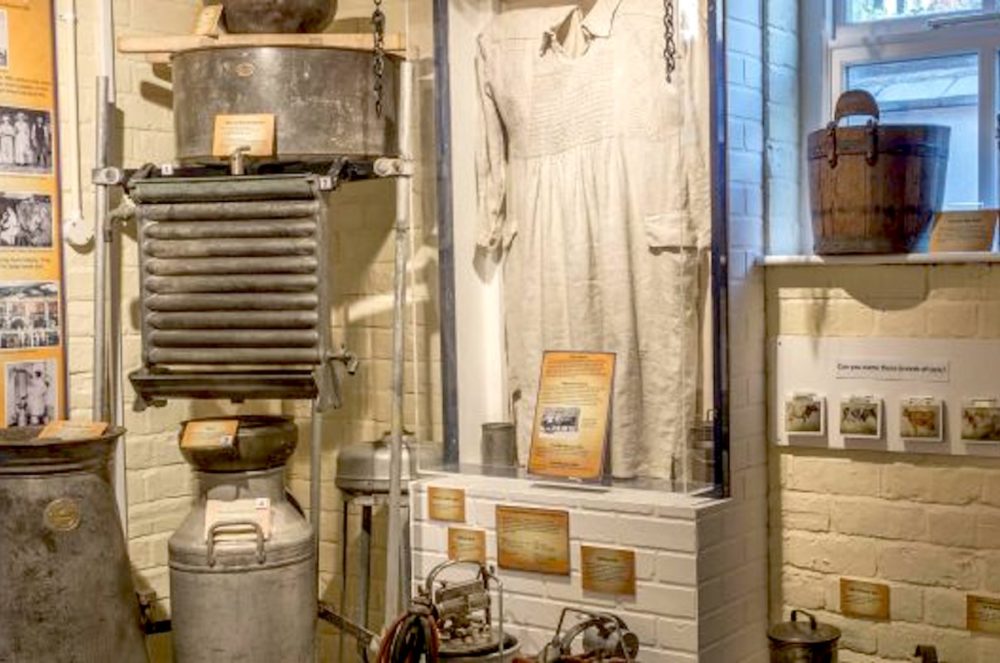
The Cheese Room at Nantwich Museum (Photo: Nantwich Museum)
At the Nantwich Museum, there’s an entire room – The Cheese Room – crammed to the ceiling with Georgian butter churns, cheese bandaging tables, press stones and Victorian cheese presses, as well as awards and certificates that tell the story of Cheshire cheese in its heyday, which lasted into the early 20th century.
The fall and rise of Cheshire cheese
But like many of Britain’s other local territorial cheeses, traditional Cheshire cheese had become virtually extinct by the 1930s. The rise of factory production and imports, and the introduction of the Milk Marketing Board in 1933, set up to control and maximize milk production, kickstarted the decline. World War Two practically wiped it out.
“When the war came, all Cheshire cheesemaking stopped and farmers were told to start making a cheddar-style cheese because the war office thought it would last longer,” Nick explains. “That’s why my grandparents stopped making cheese.”
But things are starting to look up for Cheshire cheese. People are starting to take notice of what’s on their doorstep.
At The Cheese Shop Nantwich, Nick sells over 160 artisan cheeses, stored in a glass-fronted cellar that mimics the conditions of a cave, where these cheeses were traditionally stored. “We concentrate on cheese in the round. Nothing in blocks of anything, so uninspiring.”

Inside the cheese cellar at The Cheese Shop Nantwich (Photo: The Cheese Shop Nantwich)
Bourne’s Cheshire cheeses are best-sellers. “But there’s also a growing demand for other cheeses made here in Cheshire on the salt plains too,” Nick explains. “For example, Anne Clayton has developed an Alpine-style cheese using her farm’s own milk in Malpas. Burt’s Blue is made from Cheshire milk in Knutsford.” So, rather than looking to the continent for inspiration, people are looking closer to home for a taste of the local land and its traditions.
Hugo has noticed positive changes in the industry too. “People our age used to go into the local supermarket and pick up the cheapest cheddar. But that’s changing. More people want local produce, to support local farmers and businesses. They want to know where it comes from and the story behind it. We have a great product that does just that, we just need to shout about it.”
This involves educating customers on the people and process behind the cheese, whether that’s at farmers’ markets or online. “It’s a family business. All the work is done by hand and we control everything. It’s all us. If we want to make a different cheese, we don’t just look at what happens in the dairy, we’re looking at what’s happening in the parlour and outside on the fields,” he explains.
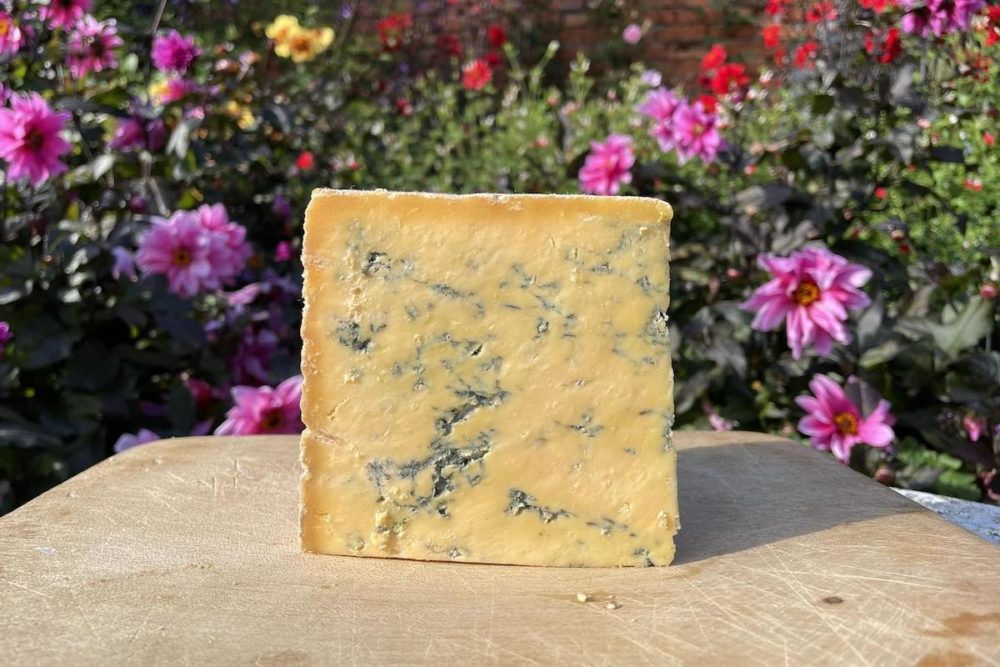
Blue Cheshire is the oldest recorded cheese in Britain. Only Bourne’s still make it (Photo: Bourne’s Cheshire Cheeses)
Bourne’s Cheshire Cheeses has won a slew of awards, including gold and silver medals at the British Cheese Awards, Nantwich International Cheese Show and the World Cheese Awards. For a small family-run farm in South Cheshire, that’s no mean feat. Cheesemaking is a temperamental business, dependent on a long list of variants which can alter the taste and texture of each cheese. It’s why passion is so important. “To be in cheese, you either need to be passionate or nuts”, confirms Nick.
Hugo agrees. “It all boils down to passion. With cheese, you can steer it, you can manipulate it, but you can never stop it. You can’t slow it down. It’s stressful, but there’s no better feeling than walking into the kitchen for breakfast after you’ve made cheese and it’s all gone well, because you know that in three or six months, you’ll have a brilliant cheese. It makes it all worth it.”